 Without a doubt, the most advanced designs available to the general public today are kitplanes. In many cases, the aircraft available in the experimental category are among the best in the world. In some cases, they are the best in the world, and that’s a statement you can back up in the record books. Still, even the most prolific of companies in this industry don’t run with deep profit margins – just look at Stoddard-Hamilton, which filed for bankruptcy earlier this month. But if you’re looking to buy, you’ve got to start somewhere. The question is – where?
Without a doubt, the most advanced designs available to the general public today are kitplanes. In many cases, the aircraft available in the experimental category are among the best in the world. In some cases, they are the best in the world, and that’s a statement you can back up in the record books. Still, even the most prolific of companies in this industry don’t run with deep profit margins – just look at Stoddard-Hamilton, which filed for bankruptcy earlier this month. But if you’re looking to buy, you’ve got to start somewhere. The question is – where?
An issue of Kitplanes magazine from just a few years ago listed 537 available designs. That’s a lot of kits. In an industry this unregulated, that means there can be a lot of pitfalls for the unwary. What follows are some of the details of which the careful prospective builder should be aware. Let’s start with the numbers.
The Math
Of those 537 kits, 498 were listed in the airplane section. Of those, 166 were listed the number flying as 10 or less. That’s exactly 1 out of 3. Ninety-two of those designs listed the number completed as one or less. That’s nearly 1 out of 5. That year, an additional 82 did not report “number completed” at all – not a good thing. For that year, there were about 498-166-82=250 (or just about half of those designs listed) that may have been around long enough to have the major bugs worked out of them. With those kind of numbers, the trick here isn’t finding a good design. Instead, it’s finding a good kit from a good company.
A Place To Start
 There will always be a lot of new – and very impressive – entrants into the kitplanes arena. These are great stories to watch from the bleachers, just don’t become a player. Unfortunately, there are some very good reasons to stay away from those promising new designs. Unless you are highly motivated and very much accustomed to using your mind and hands to build aircraft and order all the parts for them and schedule the building process, you do not want one of the first 10 to come off the line. If 10 are flying already, you might be okay. If 10 aren’t flying … leave the R&D to those who are so inclined and those who have the time. If the designs/manufacturers are good, they will prove themselves without your help, and in the end you’ll have the option of buying a better product from them when the time is right – if you’ve played your cards right.
There will always be a lot of new – and very impressive – entrants into the kitplanes arena. These are great stories to watch from the bleachers, just don’t become a player. Unfortunately, there are some very good reasons to stay away from those promising new designs. Unless you are highly motivated and very much accustomed to using your mind and hands to build aircraft and order all the parts for them and schedule the building process, you do not want one of the first 10 to come off the line. If 10 are flying already, you might be okay. If 10 aren’t flying … leave the R&D to those who are so inclined and those who have the time. If the designs/manufacturers are good, they will prove themselves without your help, and in the end you’ll have the option of buying a better product from them when the time is right – if you’ve played your cards right.
The Rules
One Airplane Does Not A Kit Make…
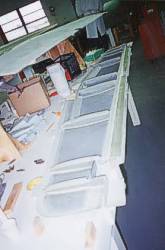 I worked for one kitplane company that had sold 50 kits (they had a very sexy product) and had still not figured out how the tailwheel would retract. They had also overlooked that a manufacture design change (which significantly decreased production time) rendered the canopy attach system flimsy – if not deadly. Sometimes it works to the manufacturer’s advantage that the building process is slow.
I worked for one kitplane company that had sold 50 kits (they had a very sexy product) and had still not figured out how the tailwheel would retract. They had also overlooked that a manufacture design change (which significantly decreased production time) rendered the canopy attach system flimsy – if not deadly. Sometimes it works to the manufacturer’s advantage that the building process is slow.
When you build, you want your learning curve to be as steep as possible and you do not want to adopt anyone else’s along the way. You do not want to be involved in the manufacturer’s learning curve – that would be bad. You were probably expecting to make a few small mistakes when building due to the newness of the experience (read: expect to be doing some “one-time tasks” more than once). There is no reasonable theory for expecting that a young kitplane company will not have similar problems as it moves from design to engineering to prototyping to production and marketing.
So how do you weed out the good from the bad? Statistics are handy in this area. Find out when the prototype first flew. Then, find out how many kits have been sold since and compare that against the number of those kits that are now flying airplanes. That last part is the most important. Remember; the airplane doesn’t come in a box. Parts for the construction of the airplane come in the box. You’re not buying an airplane, you’re buying a kit and it doesn’t matter how great a kitplane is if people can’t finish it. Do your best to contact those who successfully completed theirs and ask them about their experience. Include questions about the demands it placed on their time and their satisfaction with the company they purchased from.
…Talking To Yourself…
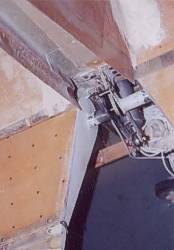 Don’t talk yourself into anything. Every pilot has a dream plane. Kitplanes are designed to fulfill those dreams – and the ads for them are designed to cater to those dreams. As you pick your design, you will be bathed in silken statistics. The performance numbers are dreamy. The plane’s economy is dreamy. Try not to get starstruck with the image before you know the airplane. It’s very easy to take those numbers and that “money shot” picture, and let an airplane that is well-marketed become the airplane of your dreams before you even sit in it. Important: Don’t let anyone tell you anything the plane hasn’t told you for itself. Including you.
Don’t talk yourself into anything. Every pilot has a dream plane. Kitplanes are designed to fulfill those dreams – and the ads for them are designed to cater to those dreams. As you pick your design, you will be bathed in silken statistics. The performance numbers are dreamy. The plane’s economy is dreamy. Try not to get starstruck with the image before you know the airplane. It’s very easy to take those numbers and that “money shot” picture, and let an airplane that is well-marketed become the airplane of your dreams before you even sit in it. Important: Don’t let anyone tell you anything the plane hasn’t told you for itself. Including you.
…Talking To The Designer…
While there are a lot of good and good-hearted designers out there, people don’t get into this business to get rich: Don’t forget that they have egos, too. They have worked very long and very hard on their design (for years). Now they have seen their dream come true. Do not underestimate the impact of that notion on a designer’s attitude about his/her product. Designers seldom offer the most objective perspective.
If you run into any problems once you’ve started building – this is their first design, and yours is number six – they may not be very open to you pointing out their shortcomings and how it has complicated your life. No one wants to hear that the airplane they designed to be the ultimate whatever is not a good enough kit for you. This is not a situation with which you want to get involved. I speak from personal experience – take it as advice, if not law.
Understand that designers have had to overcome a large number of formidable obstacles to produce a kit and, understandably, this has forced them to make numerous compromises along the way. The problem this causes for you is that they more than likely did not make the choices you would have. They are sellers and you are a buyer: You are approaching the same problem from opposite sides of the coin. Ultimately, they will learn that your way is the right way, but you as a builder and a buyer do not want to be a part of that initial argument.
The Lesson:
Be careful what you ask for when you talk to the designer. Designing a plane and designing a kit are two different things. Just because it’s a great plane does not mean that it is a great kit – and it’s never going to become your great plane unless you can get through the kit. All you want to know from the designer is why they designed the plane and how close that is to what you had in mind. Your compatibility with the kit is another matter.
…Go Sit In One
Go fly one. Try to sit in one and fly in it in the same way you dreamed you would. Very important: If your spouse was in the dream, bring her (or him) to sit next to you and listen to her (or his) comments. Your spouse might have been smiling as you flew three hours cross-country in the dream or buzzed low and slow through a riverbed. It’s worth seeing the real expression on a real face before you lay out the money.
And, of course, are you smiling … or are you losing feeling in your legs? A lot of these designs pick up performance by having low frontal area. There being no free lunch – especially when it comes to aircraft design – this can often translate to no room for arms, legs or pilots. Make sure you, your loved one and whatever else you plan on stuffing in there fit without any unwarranted binding or chafing. Again, be aware that aircraft design is about compromise: If they’re roomy and still have great numbers, there’s a very good chance they either have a big engine – which means $40 of fuel an hour – or it means the finished products needs lots of smooth pavement to get airborne.
Hint: Get the specifics. Find out what effect adding all those avionics you want (and their weight) will have on the performance you crave.
The bottom line? There are excellent designs out there. Buy the one that is what you want it to be. Buy the one that will do what you will use if for. Do not buy one to change it into the design you actually wanted. Be very introspective in your judgment in this area and always true to yourself.
Tips And Traps As You Get Close
Never Trust A Salesman…
Get references. Find people who are building and find people who have ordered. Are the manuals clear? Have the parts arrived on schedule? What is the quality of the parts and, more important, what are they comparing it to? If their realm of comparison is not up to your standards, find out for yourself. Visit builders of various kitplanes who live “nearby,” even if theirs is not the same design as the one you have in mind. Local EAA chapters will be glad to help you with this. This is not an extra step, because if you do build, you will be talking to these people anyway for all kinds of reasons and for all kinds of help. Personal visits will give you invaluable perspective on what’s out there.
…Never Trust A Salesman, Part 2…
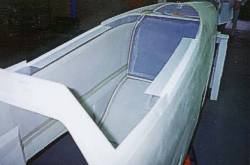 If they say it climbs 3,000 fpm, ask how they measured it. Many companies (especially in their early stages) will ballpark those figures or rely on computer-generated numbers for ROC, cruise, range, ground rolls and roll rates, that their prototype has not lived up to … “yet.” Again, talk to people who know, because they built one and are flying it. If there are none to talk to, it doesn’t matter what the reason is. Just walk away.
If they say it climbs 3,000 fpm, ask how they measured it. Many companies (especially in their early stages) will ballpark those figures or rely on computer-generated numbers for ROC, cruise, range, ground rolls and roll rates, that their prototype has not lived up to … “yet.” Again, talk to people who know, because they built one and are flying it. If there are none to talk to, it doesn’t matter what the reason is. Just walk away.
…Never Trust A Salesman, Part 3…
I know of one popular manufacturer who had sold 20 kits and delivered zero complete kits. While this is not always a cause for alarm – again very few people build airplanes all that fast – it may (and did in this case) indicate financial or practical production problems at the parent company.
Now for some inside information: Companies usually don’t have much money when they start up. Some of them run through the early years like a pyramid scheme – the money you pay for kit #20 pays for the materials for kit #7. The delivery schedule stretches longer and longer. Slow delivery times and rapidly increasing kit prices are a good indicator of this sort of problem. While you may be able to look into it, you’d rather get a kit after those problems have been ironed out – even though you will end up shelling out more cash.
…Never Trust A Salesman, Part 4…
Building time: Only 700 hours… Ask people who are building the kit. How good are the instructions? How much can they get done in a weekend?
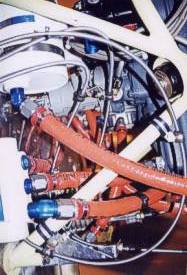 Start with the basics: How many pages are there in the manual? How about the blueprints? That 700 hours may be reasonable for a retired engineer who is used to reading blueprints and can continue to work the whole week through without interruption … or for those who feel it is okay to do an okay job on something that in many cases will take at least four years to do, cost $70,000 and all of your spare time to complete – and be something that you will trust your life to.
Start with the basics: How many pages are there in the manual? How about the blueprints? That 700 hours may be reasonable for a retired engineer who is used to reading blueprints and can continue to work the whole week through without interruption … or for those who feel it is okay to do an okay job on something that in many cases will take at least four years to do, cost $70,000 and all of your spare time to complete – and be something that you will trust your life to.
If all of the above is okay by you, and you’re an aeronautical engineer, an A&P and an avid hobbyist, maybe that build time applies to you. But this is your airplane. You will not have the luxury of saying “it could have been better but this is just the prototype” and it’s likely that you’ll spend about 100 hours just shopping for the right paint and upholstery for your dream machine (amenities that are not often included in build-time estimates). Even ordering the right parts and having them arrive at the right time is not as easy as it looks. A lot of mistakes can be made when doing something for the first time, and they often are.
…You Get What You Pay For – Usually…
There are no deals in this or any market. It is generally very competitive, with many similar designs fighting for the same market segment. If one design is significantly less expensive there is probably a good reason. “Reasonable” reasons include: differences in materials used, e.g., high-temp pre-preg vs. wet lay-up; aircraft grade vs. hardware store-quality hardware; manuals and blueprints vs. instructions and pictures; prefab vs. “here are the raw materials.”
Look into things carefully. There is a wide range of kits out there and your airplane may come in a kit that is not right for you. But skills you can learn and time you can make. These things can be overcome.
…Consider Your Workspace…
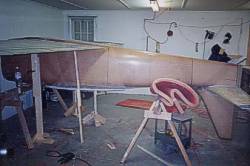 Be aware of the space needed for storage as well as work. Certain tasks in kitplane building take as much or more time in preparation as they do in physical work, and this aspect is magnified if your space is small and you must “make space” to work. These constraints become especially apparent when the only time you have is the weekend. As a rule of thumb, a good amount of space is twice the space needed to store the aircraft comfortably when completed, although you can get by with half that.
Be aware of the space needed for storage as well as work. Certain tasks in kitplane building take as much or more time in preparation as they do in physical work, and this aspect is magnified if your space is small and you must “make space” to work. These constraints become especially apparent when the only time you have is the weekend. As a rule of thumb, a good amount of space is twice the space needed to store the aircraft comfortably when completed, although you can get by with half that.
Also, is there a significant other in or near the workspace? Better cut that free time in half. Sprinkle in a good dose of clean-up time, too, if you’d like them to remain significant and not just other. Your mileage may vary….
…Factory Support…
How much guidance will you need? Be very honest with yourself and very generous with your estimate. If you are unsure of yourself at any stage of the project, will you need affirmation before moving on? Find out what incarnation the support system has taken back at the manufacturer’s end. Do they have a system or department to deal with builder questions? Is there an 800-number you can call? Or is it “we’re usually around to take your call”? You are more than welcome to ask the company, but find out from the builders. Always find out what the results are from the receiving end of the equation.
…Tools Required
Only simple hand tools, right? What does that do to the build-time estimate? Did they build the prototype with simple hand tools? It’s worth asking, but be specific and accept specific answers only. There’s a difference between an air-powered hand tool and a hand-powered hand tool. Whatever anyone says, the more money you spend on tools, the less time you will spend sweating.
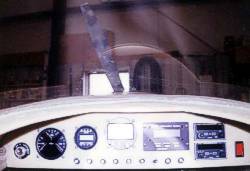 Make a list of what you need and make a separate list of what would be handy to have if you had the cash (you may need to seek out help to make sure the list is complete – ask several builders). The actual making of the lists not only forces you to differentiate, but it also provides you with an item to circulate to your EAA buddies – aside from giving you an idea of what you’re getting yourself into. Don’t worry, you will probably be able to borrow the more expensive/less frequently used items. What’s more, most of those tend to come with a ready step-by-step explanation and a tutor who will have a vested interest in your using the tool properly for the best results (read: not breaking it). They feel good for being able to teach, and you get the job done by someone who knows what they’re doing. It really does work very well.
Make a list of what you need and make a separate list of what would be handy to have if you had the cash (you may need to seek out help to make sure the list is complete – ask several builders). The actual making of the lists not only forces you to differentiate, but it also provides you with an item to circulate to your EAA buddies – aside from giving you an idea of what you’re getting yourself into. Don’t worry, you will probably be able to borrow the more expensive/less frequently used items. What’s more, most of those tend to come with a ready step-by-step explanation and a tutor who will have a vested interest in your using the tool properly for the best results (read: not breaking it). They feel good for being able to teach, and you get the job done by someone who knows what they’re doing. It really does work very well.
If You Choose To Build
Advice: Seek As Much As You Can At Every Stage…
There’s no need to reinvent the wheel. Getting a lot of advice has many good side effects. For one, you create ties within the aviation community. Another is that you will get better at distinguishing the enthusiasts from the genuinely informed – a handy talent.
…Looking Silly…
You don’t have to look like you know what you’re talking about. And if you don’t know, it’s better to admit it and make that obvious to everyone now, rather than have it become evident later when your project is done and “less than perfect.” Besides, the more different techniques you make yourself aware of, the more likely you are to find one that best fits you and the more able you will be to modify it to suit your needs as you learn.
…Know When To Say When…
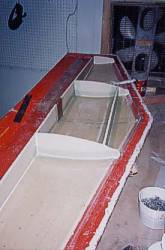 As you go about building your aircraft, you will find yourself getting better and better at solving problems and creating solutions in increasingly complex situations. It’s exciting at first, and draining, but later it can become addictive. Sooner or later your skill level has risen to the point where you can fix just about anything you mess up and figure out any problem that arises. You become a very powerful person when you have gotten this far.
As you go about building your aircraft, you will find yourself getting better and better at solving problems and creating solutions in increasingly complex situations. It’s exciting at first, and draining, but later it can become addictive. Sooner or later your skill level has risen to the point where you can fix just about anything you mess up and figure out any problem that arises. You become a very powerful person when you have gotten this far.
The obvious trap? The problem is not how to see a certain series of steps through. It becomes stopping yourself from fixing things when the better solution is to scrap it and start over. It is not always easy when you’ve gotten yourself all wrapped into problem-solving and finally worked through a solution. The key is to step back and reassess things: There will be a great ego boost if you figure it out or fix it and make it work the first time. But would it be better for the airplane for you to start over and make it perfect the “second time?”
…Don’t Be Bullied…
Aesthetics:
A lot of outside influences will offer advice on how to do things ranging from how to drill holes, to how to fill and prime, to what your airplane should look like. Remember, your free time is on the line (waste as little of it as you can). This is your project and it should look how you want it to and be done in a manner you feel good about. Advice is good. Doing something you’re not comfortable with – at any stage in this game – is not!
Physics:
 Most important, your life is on the line. Do not spend any time listening to people who have good modification tips, unless they are the designers. Even then, make sure it has passed the eyes of an engineer well-versed in these matters. And, do not let the manufacturer pass off production flaws as okay. It can be very tempting to give in to their superior experience, but this is your airplane and it is your responsibility to get at least the highest quality practical. This is one place where you shouldn’t be shy about sending the bad soup back to the kitchen.
Most important, your life is on the line. Do not spend any time listening to people who have good modification tips, unless they are the designers. Even then, make sure it has passed the eyes of an engineer well-versed in these matters. And, do not let the manufacturer pass off production flaws as okay. It can be very tempting to give in to their superior experience, but this is your airplane and it is your responsibility to get at least the highest quality practical. This is one place where you shouldn’t be shy about sending the bad soup back to the kitchen.
Myth:
The designer created it and any change he makes must be okay. The truth is that the designer drew it, and told the engineer how he’d like it to hold up to what kind of punishment. The engineer is the guy who makes sure it won’t fall apart until those limits are exceeded. This is not something to mess around with. At all.
…Be Careful Out There!
The way things are set up right now, any Mary or John can sell kitplanes, and you will sign your life away when you buy one. But remember, when the FAA comes by and says it’s airworthy they won’t be dropping a single sandbag to see if that wing can hold it – let alone the 7 g’s the manufacturer says it will. Be careful. Most young kitplane companies cannot afford to break their prototype to test their computer-designated load parameters. Some have not even done static load tests of components to their stated limits to see if they hold up.
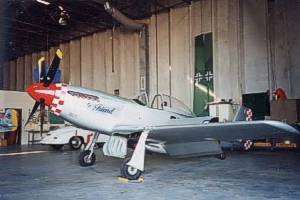 In most cases, the ultimate load of your airplane is a computer-generated number that the kitplane manufacturer has divided by 1.5 or 2 to allow a good safety margin. It is an industry standard and a good practice. That method does not, however, take into account the possibility that actual construction methods, materials, or techniques could somehow be flawed. Especially because all of those things tend to get changed as the company streamlines its manufacturing/production process. In other words, even if they did break their prototype it is quite possible that your aircraft is built differently, or has a number of different or altered components from that of the prototype. Regardless, you don’t want to be the one to point out the fact that things have changed by splattering yourself across a cornfield. The information won’t be of much use to you then anyway. Buy a proven design from a proven company with a good track record; there are plenty out there.
In most cases, the ultimate load of your airplane is a computer-generated number that the kitplane manufacturer has divided by 1.5 or 2 to allow a good safety margin. It is an industry standard and a good practice. That method does not, however, take into account the possibility that actual construction methods, materials, or techniques could somehow be flawed. Especially because all of those things tend to get changed as the company streamlines its manufacturing/production process. In other words, even if they did break their prototype it is quite possible that your aircraft is built differently, or has a number of different or altered components from that of the prototype. Regardless, you don’t want to be the one to point out the fact that things have changed by splattering yourself across a cornfield. The information won’t be of much use to you then anyway. Buy a proven design from a proven company with a good track record; there are plenty out there.
Reasons For Building
 If you’re building because you can’t afford buying, maybe you should rethink things. Remember that if your dream plane is more expensive than you can afford, you probably could afford it if you spent your weekends working overtime at your job or picked up a second job. The more expensive projects (fast glass) are going to take you about five years to complete with project costs hurdling $70,000 with ease. There is a lot of money you could make in five years if you are creative, resourceful and devote your energies to it. You are creative, resourceful and energetic, aren’t you? You were planning on working your weekends, weren’t you? If you are simply looking forward to the building process, there is nothing more to say.
If you’re building because you can’t afford buying, maybe you should rethink things. Remember that if your dream plane is more expensive than you can afford, you probably could afford it if you spent your weekends working overtime at your job or picked up a second job. The more expensive projects (fast glass) are going to take you about five years to complete with project costs hurdling $70,000 with ease. There is a lot of money you could make in five years if you are creative, resourceful and devote your energies to it. You are creative, resourceful and energetic, aren’t you? You were planning on working your weekends, weren’t you? If you are simply looking forward to the building process, there is nothing more to say.
If you’ve made it this far, you deserve a taste of the upside. Building is a working experience of unparalleled reward and self-empowerment. It is the creation of your dream through your own hands, put to the harsh test of reality. In one monumental effort you create what existed only in your highest hopes and ambitions. It is like flying. There will be no excuses at the end of the day. There will simply be you and what you’ve done. And the truth of its excellence and failures will be manifest for all the world to see. You will have tackled a project – an event, really – of such magnitude few others would dare consider it possible. You have indeed made your dream come true. And that makes your reality special – to you and everyone.


































